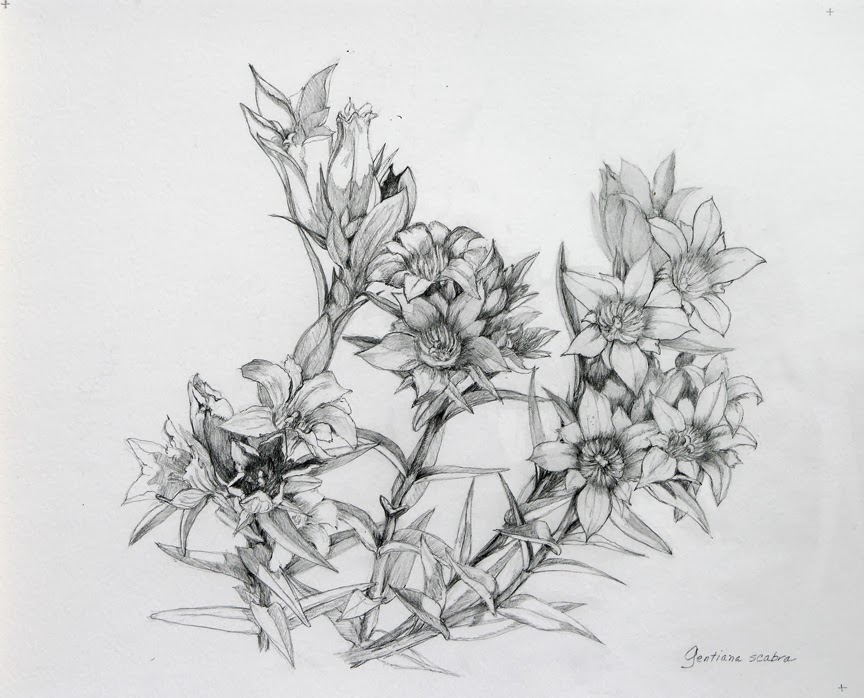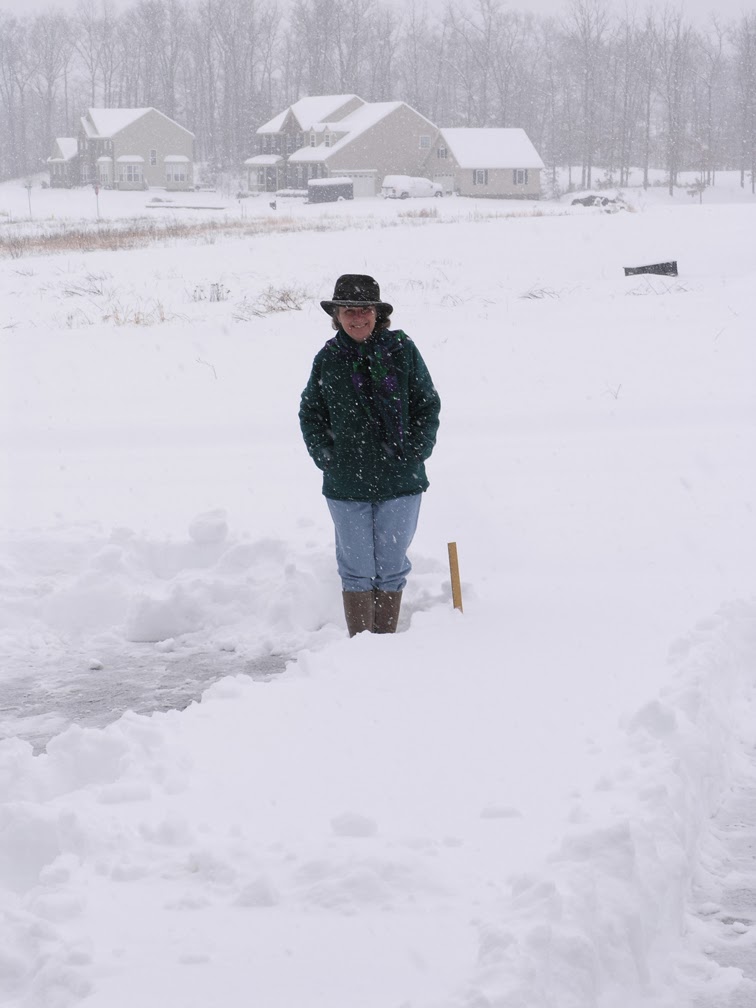It seems odd to be out looking for orchids at this time of the year, but yesterday was a nice winter day -- sunny with no wind, temperatures in the fifties -- a perfect day to get out to pursue my botanical interests after being cooped up indoors. Herb joined me on the hike.
After
my find of the Puttyroot or Adam-and-Eve orchid (
Aplectrum hyemale) growing on
Wildcat Mountain last spring I learned that this orchid puts out its single leaf in the fall. The leaf persists through the winter to die back in early spring. I had been wanting to see these leaves for myself, and with no underbrush to obscure them, this seemed like a great time to look for them.
We left the house around eleven thirty and started climbing up the mountain around noon. A younger family moving at a faster pace soon overtook us on the trail and we let them pass. We took the left fork at the top and proceeded toward the area where I remembered seeing the orchids. Herb was lagging behind and called out to me as we were walking by one of the old stone walls. He had spotted something he thought might be what we were looking for and sure enough, here were two orchid leaves. One had an intact dried seed pod.
I had not seen any orchids in this part of the preserve last spring, and was surprised to see just how close to the trail they grew. The leaf is very distinctive with its pleated white veins.
 |
| Aplectrum leaf |
Another few leaves cropped up a bit farther along. Apparently there are quite a few more plants of this species here than I had been able to pick out last spring. When we finally reached the spot where I had sketched before, the place was rife with them!
There was more green on the ground than I had expected to see: Christmas ferns (covered with ice in the shadier places) and a club moss called ground cedar (
Lycopodium digitatum).
With our objective accomplished, we looped around the trail and back down the mountain in the warm afternoon sun. Next spring we'll look for more native orchids: Wister's coralroot and lily-leaved twayblade are known to be found here, and who knows, perhaps there could be others?














